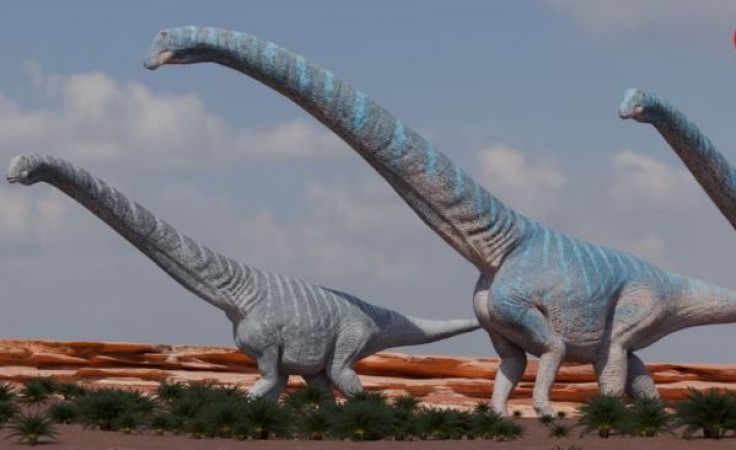
Scientists have recently unveiled a colossal dinosaur species that roamed the Earth millions of years ago, naming it after the Hindu deity Lord Shiva. These dinosaurs stood a towering 98 feet tall and were discovered in Argentina. Research suggests that these dinosaurs ruled the Earth over 90 million years ago. Scientists bestowed the name "Bustingorrytitan shiva" upon this dinosaur. Efforts have been made, with the assistance of an artist, to depict how these creatures with long necks might have appeared. B. shiva is among the largest sauropods ever found, with estimates indicating a weight of around 74 tons, according to research published last December. The discovery of B. shiva was made in the region of Northern Patagonia. It was first sighted by a farmer in 2000, and excavation began in 2001. Initially, a leg bone was unearthed, followed by remains from at least four dinosaurs.
Coexistence of Dinosaur Species in Northern Patagonia
Research has revealed that in Northern Patagonia, two species of Behemoth Titansaurians, namely B. shiva's saltasauroids and Argentinosaurus' lognkosaurs, coexisted. According to the study, they were found alongside smaller sauropods during the Cretaceous period (145 to 66 million years ago).
Lead author of the study, Maria Edith Simon, explains that each sauropod species was distinct, exhibiting differences in their vertebrae, heads, and bodies. Simon told LiveScience, "This suggests that they could not have coexisted without competing against each other."
Survival of B. shiva's Lineage Until the End of the Cretaceous
The study indicates that due to a catastrophic event during the late Cretaceous period, early Diplodocoid sauropods and some Titanosaurs, such as B. shiva, became extinct. Researchers are still uncertain about what exactly happened to B. shiva.
According to researchers, some lineages of saltasauroids survived the event and persisted until the end of the Cretaceous period. Ultimately, a collision with an asteroid wiped out all non-avian dinosaurs on Earth. This remarkable discovery sheds new light on the diverse world of dinosaurs and their complex interactions during the prehistoric era.
What is the difference between Tesla Model 3 and Xiaomi SU7? Know here
Strong offers are available on these best smartphones of Moto, this is the last date
A phone with 5,000 mAh battery is available for less than Rs 8,000, see here